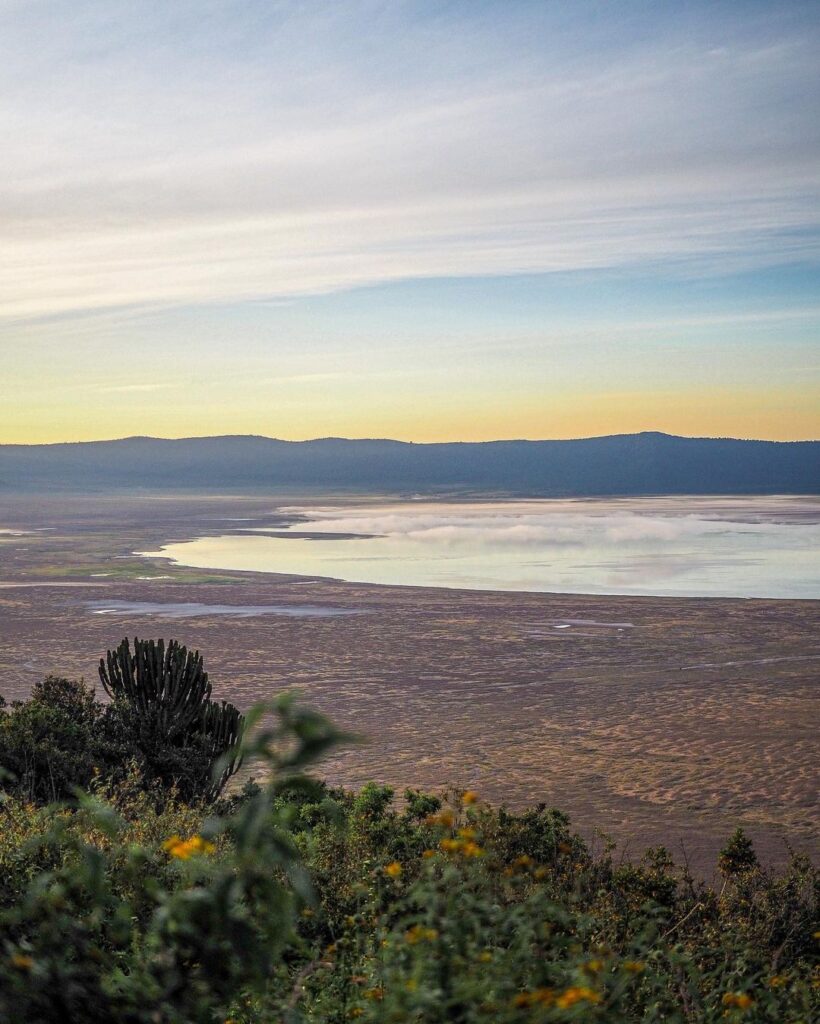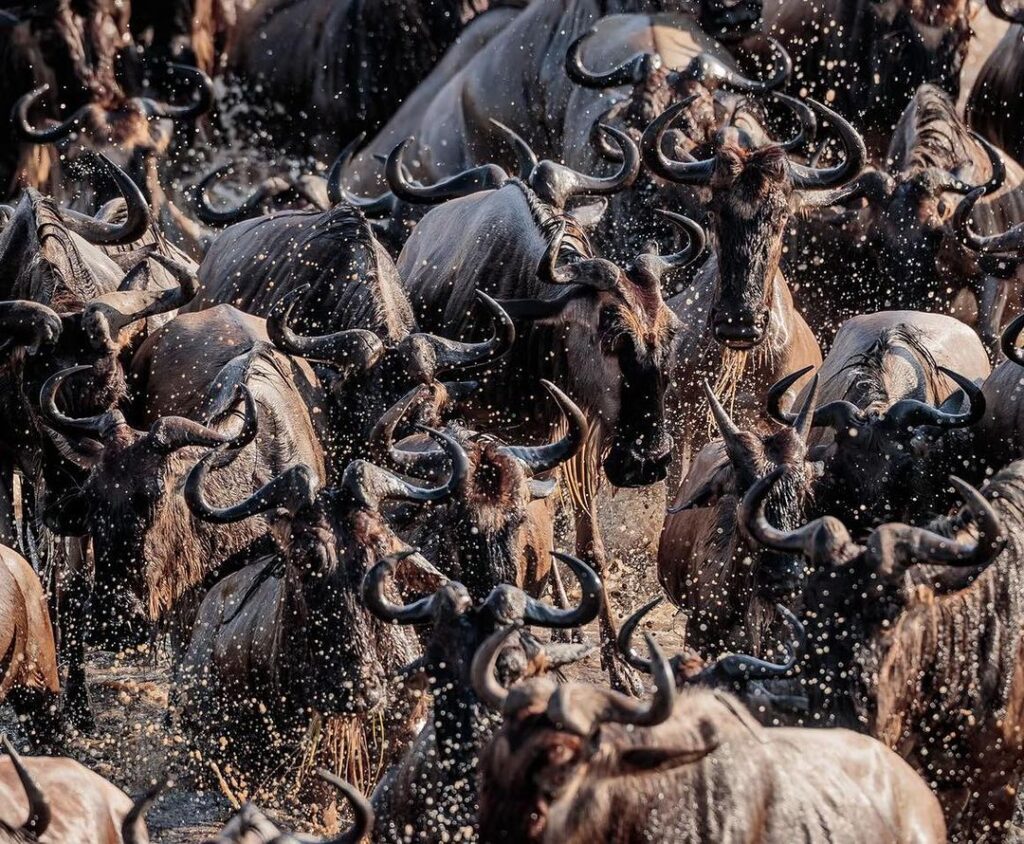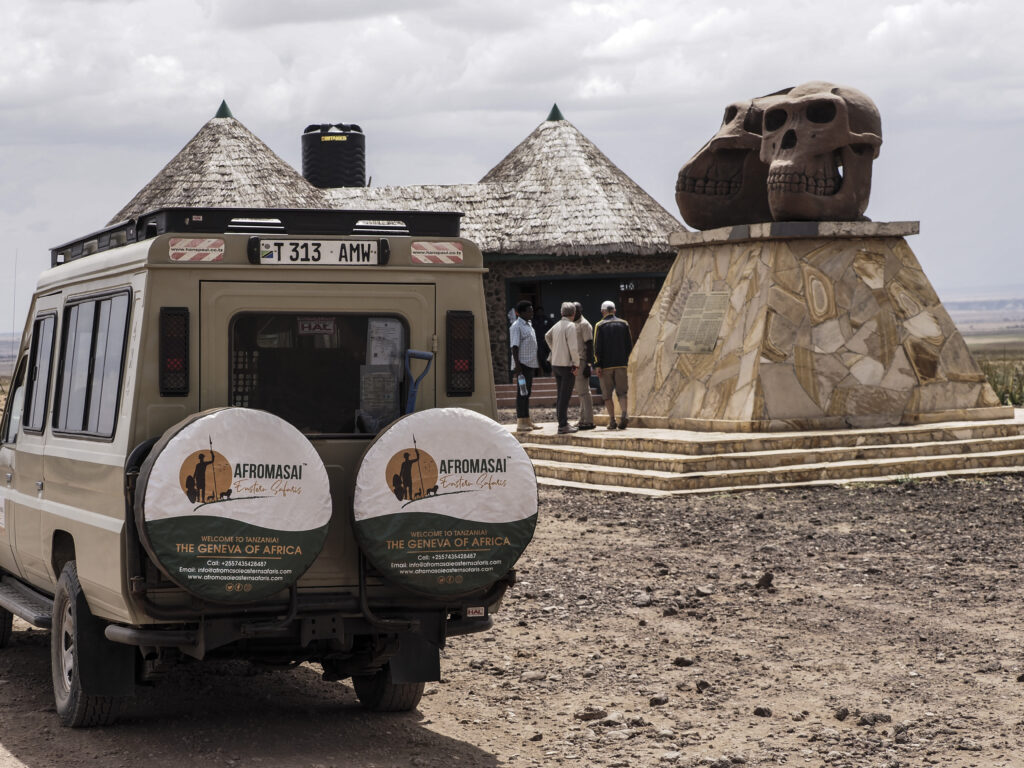Ngorongoro Conservation Area

The Ngorongoro Conservation Area (NCA) is a conservation area and a UNESCO World Heritage Site located 180 km (110 mi) west of Arusha in the Crater Highlands area of Tanzania. The area is named after Ngorongoro Crater, a large volcanic caldera within the area. The conservation area is administered by the Ngorongoro Conservation Area Authority, an arm of the Tanzanian government, and its boundaries follow the boundary of the Ngorongoro Division of the Arusha Region.
It has been reported in 2009 that the government authority has proposed a reduction of the population of the conservation area from 65,000 to 25,000. There are plans being considered for 14 more luxury tourist hotels, so people can access “the unparalleled beauty of one of the world’s most unchanged wildlife sanctuaries”. None of the senior-level positions in the Ngorongoro Conservation Area is yet held by a member of the local Maasai pastoralists.
Ngorongoro Crater
The main feature of the Ngorongoro Conservation Authority is the Ngorongoro Crater, the world’s largest inactive, intact, and unfilled volcanic caldera.
The crater, which formed when a large volcano exploded and collapsed on itself two to three million years ago, is 610 metres (2,000 feet) deep and its floor covers 260 square kilometres (100 square miles). Estimates of the height of the original volcano range from 4,500 to 5,800 metres (14,800 to 19,000 feet) high. The elevation of the crater floor is 1,800 metres (5,900 feet) above sea level. The Crater was voted by Seven Natural Wonders as one of the Seven Natural Wonders of Africa in Arusha, Tanzania in February 2013.
The crater highlands on the side facing the easterly trade winds receive 800 to 1,200 millimetres (31 to 47 inches) of rain a year and are covered largely in montane forest. The less-steep west wall receives only 400 to 600 millimetres (16 to 24 inches) and is grassland and bushland dotted with Euphorbia bussei (es) trees. The crater floor is mostly open grassland with two small wooded areas dominated by Acacia xanthophloea.
Wildlife Nature In Ngorongoro Crater
The conservation area is home to an abundance of wildlife, including the “Big Five” (lion, leopard, elephant, buffalo, and rhinoceros), as well as numerous other species like cheetahs, zebras, wildebeests, hippos, giraffes, and a multitude of bird species.

Large animals in the crater include the black rhinoceros (Diceros bicornis), the local population of which declined from about 108 in 1964-66 to between 11-14 in 1995, the African buffalo or Cape buffalo, and the hippopotamus (Hippopotamus amphibius). There also are many other ungulates: the blue wildebeest (Connochaetes taurinus) (7,000 estimated in 1994), Grant’s zebra (Equus quagga boehmi) (4,000), the common eland (Taurotragus oryx), and Grant’s (Nanger granti) and Thomson’s gazelles (Eudorcas thomsonii) (3,000). Waterbucks (Kobus ellipsiprymnus) occur mainly near Lerai Forest.
There are no topis (Damaliscus lunatus), Oribis (Ourebia oribi), or crocodiles (Crocodylus niloticus). Impala (Aepyceros melampus) are absent because the open woodland they prefer does not exist. Giraffes also are absent, possibly because of a lack of browse species. Tanzanian cheetah (Acinonyx jubatus raineyii), East African wild dog (Lycaon pictus lupinus), and African leopard (Panthera pardus pardus) are rarely seen.
The Olduvai George

Olduvai Gorge is located in the eastern part of the Serengeti Plains within the Ngorongoro Conservation Area in northern Tanzania. Olduvai Gorge, also known as Oldupai Gorge, is a paleoanthropological site in Tanzania, East Africa, that holds great significance in the study of human evolution and early human history.
The gorge has been the site of numerous important discoveries, including fossils of early hominids such as Homo habilis and Australopithecus boisei. The most famous find is the fossilized skull of “Nutcracker Man” (Paranthropus boisei) discovered by Mary Leakey in 1959.
The Olduvai Gorge Museum
Located near the gorge itself, provides visitors with an opportunity to learn about the history of the discoveries and the significance of the site. The museum features exhibits on paleontology, archaeology, and the cultural heritage of the region.


